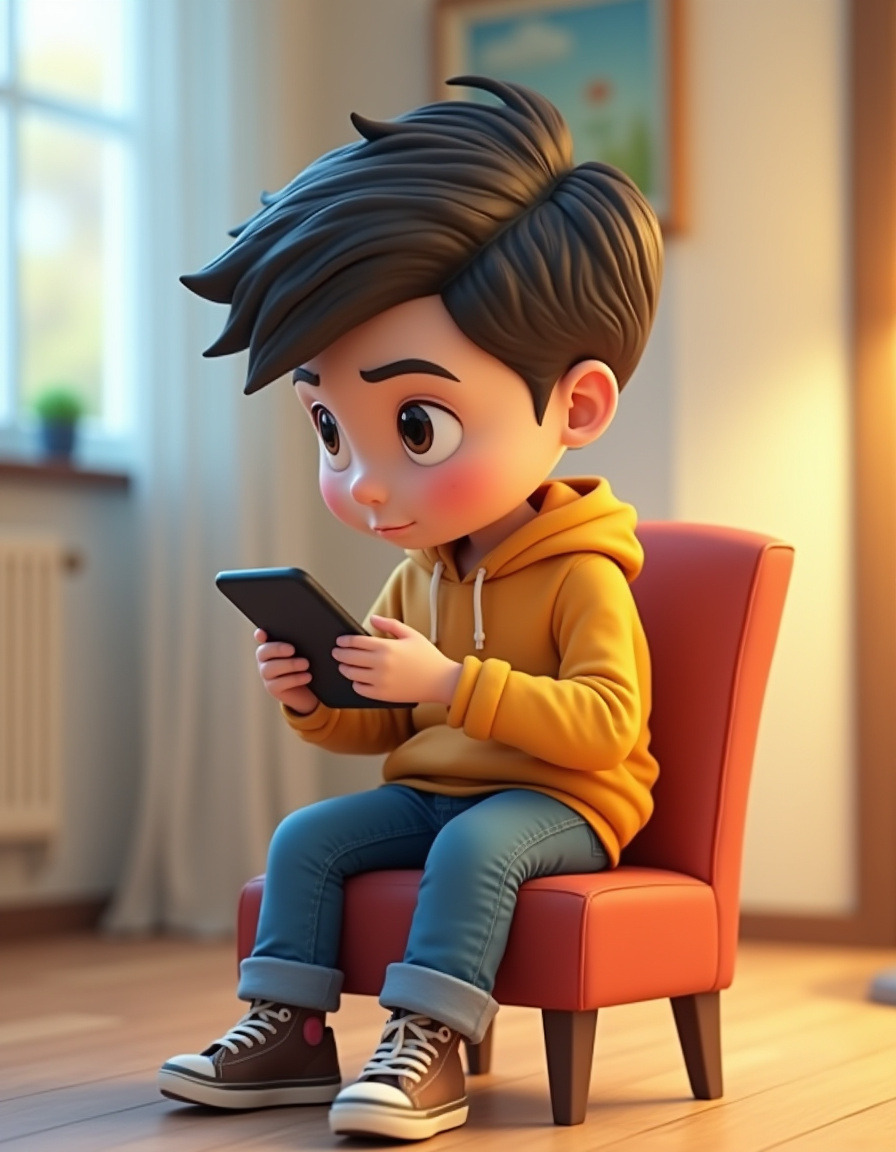Ah, the modern child—faster fingers than a concert pianist, sharper scrolling skills than a seasoned hacker, and… a neck position that might make a flamingo jealous. Welcome to the era of Text Neck, the latest unintended consequence of our tech-savvy lifestyles.
What is Text neck?
It’s not some ancient curse, but it is a real syndrome caused by constantly tilting your head forward while staring at your phone. Every time you bend your head down to check your phone, your neck muscles and spine absorb the pressure.
Imagine your head weighing 5 kilograms when upright. Now, picture bending it forward. At just a 30-degree angle, your neck feels the strain of 18 kilograms, and at 60 degrees, it’s a hefty 27 kilograms. So the more you scroll, the heavier your head feels (like a bowling ball you can’t put down). Over time, this posture can mess with your cervical spine, leading to pain, tension, and even permanent posture changes. Think of it as a long-term commitment to bad posture that your spine never signed up for.
A recent study, published on Nature, revealed that excessive phone use is associated with a significant decline in neck muscle endurance and a rise in neck pain among students. There are studies show that this habit is linked to an increase in neck pain, and even 8-year-olds are experiencing it. That’s right—kids are out here getting tech-induced neck problems before they even hit middle school.
How Much Screen Time is Too Much?
Studies suggest that spending more than three hours a day in this position significantly increases the risk of neck pain. And let’s be honest—three hours is a warm-up for most of us. And the problem isn’t just how much they use their screens, but how they use them. Constantly looking down creates a forward head position, which over time can lead to muscle imbalances, strain on the spine, and, let’s face it, an uncanny resemblance to a human question mark.
The Rise of the “Tablet Hunch”
It’s not just phones! Tablets and other screens are also culprits. Kids as young as eight years old are now being treated for headaches, shoulder pain, and poor posture, largely thanks to their ever-growing digital habits. Even physiotherapists are waving red flags, warning that an imbalance between screen time and movement is leading to physical problems that used to be reserved for much older folks.
Can Technology Save Us From Technology?
In a twist of irony, the very devices causing the problem may also offer a solution. Some smart apps now provide biofeedback on posture, track screen time, and even suggest postural exercises to help kids (and their parents!) maintain a healthier stance while using their devices.
What Can Parents Do?
- The 20-20-20 Rule: Every 20 minutes, encourage kids to look up from their screen and focus on something 20 feet away for at least 20 seconds.
- Raise the Screen: Encourage them to hold their devices at eye level instead of looking down.
- Movement Breaks: Set reminders for regular stretch breaks
- Strengthen Those Muscles: Simple neck and shoulder exercises can help counteract the strain.
- Lead by Example: If they see you slouching over your phone, they’ll do the same. Time to straighten up, grown-ups!
Technology isn’t going anywhere, but neither should good posture!
Finding a balance between screen time and movement is the key to keeping kids healthy, happy, and upright.

REFERENCES
- Elvan, A., Cevik, S., Vatansever, K. et al. The association between mobile phone usage duration, neck muscle endurance, and neck pain among university students. Sci Rep 14, 20116 (2024). https://doi.org/10.1038/s41598-024-71153-4
- Hestbaek, Lise DC, PhD; Leboeuf-Yde, Charlotte DC, MPH, PhD; Kyvik, Kirsten Ohm MD, PhD†; Manniche, Claus Dr Med Sci*. The Course of Low Back Pain From Adolescence to Adulthood: Eight-Year Follow-up of 9600 Twins. Spine 31(4):p 468-472, February 15, 2006. | DOI: 10.1097/01.brs.0000199958.04073.d9
- Gao, Y., Chen, Z., Chen, S. et al. Risk factors for neck pain in college students: a systematic review and meta-analysis. BMC Public Health 23, 1502 (2023). https://doi.org/10.1186/s12889-023-16212-7
- Giansanti, Daniele & Colombaretti, L. & Simeoni, R. & Maccioni, G.. (2019). The Text Neck: Can Smartphone Apps with Biofeedback Aid in the Prevention of This Syndrome: Proceedings of the 4th International Conference on NeuroRehabilitation (ICNR2018), October 16-20, 2018, Pisa, Italy. 10.1007/978-3-030-01845-0_150.











